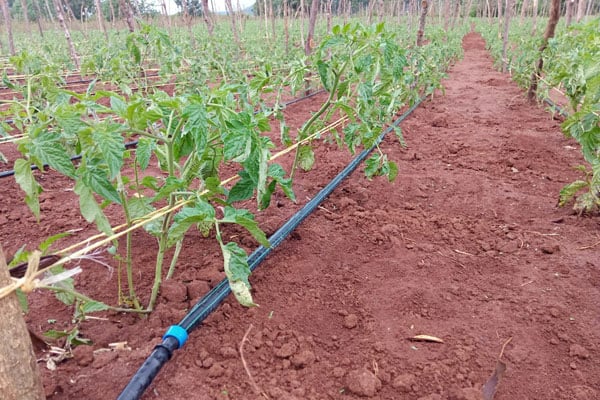Why you need drip irrigation

Farmers are encouraged to install a drip irrigation system on their farm. PHOTO/FILE
What you need to know:
- When you embark on installing your own drip irrigation system, make sure you spend time planning so as to make sure your drip system meets your requirements and can grow as your garden or field expands and your plants grow.
With irrigation bringing more arable land under cultivation, saving the amount of water in the process is a target for every farmer who wants to spend less and earn more.
Drip irrigation, which allows for consistent releases of water to target plants, is one of the methods gaining popularity for saving up to 50 percent of this scarce resource. Wycliffe Obwoge, an agronomist says the saved water can be used in another round or on similar irrigation field.
At the same time the method allows for application of liquid fertilisers and other farm chemicals like pesticides in a more precise and economic way, he says.
This reduces wastage of pesticides, water, fertiliser and other resources in a greenhouse or open field.
Reduced disease
Overhead irrigation methods encourage accumulation of moisture in the environment. Moisture creates good microclimate for disease causing germs like fungi to thrive.
But drip irrigation will limit water supply to the stem base and it will go direct to the soil. At the same time, drip irrigation gives farmers more latitude to control water supply. If there are no plants at given outlets, the farmer can temporarily close those holes with a cello tape, allowing for the water to flow to other areas instead of going to waste.
Efficient water management
Drip irrigation drips water in the area surrounding the roots. This makes sure that water gets to where it is intended. This way water is not spent on areas where plants are not growing as with other irrigation methods that irrigate the whole piece of land, for example, flood irrigation and sprinkler irrigation.
No soil erosion or nutrient loss
Irrigation methods where waterfalls on the ground with force and water runs on the surface, washing away the soil. They also lead to nutrient leaching. Drip irrigation leads to a situation where water does not carry soil and nutrients are not washed away from the roots of the plant, leaving the plant roots to absorb all the nutrients they need.
Minimal spread of waterborne disease
Drip irrigation minimises the spread of diseases that might be spread by splashing water from the plant to plant or from the soil to the plant.
Reduced cost of labour
Some irrigation systems require labour such as manual watering, moving sprinklers, and moving pipes or pumps so as to ensure the whole field is watered. Once the drip irrigation is properly set up, you will not need to do much when it comes to irrigation other than inspecting to make sure the pipes are not blocked. Inspection can be automated, where sensors can be placed in the field to detect if the soil gets dry.
Reduced energy costs
Drip irrigation operates under low pressure, hence does not require pumps to push the water through the system. Drip irrigation can operate purely on gravity. This means reduced energy costs.
Uniform yield
Consistent amount and rate of lo of water and any other resources included leads to equal supply of nutrients.
Minimal weeds
Localised release of water also reduces growth of weeds. Crops will also grow faster than weeds because they have sufficient water and nutrients for growth unlike weeds.
Key fact
Drip irrigation works by getting water into the root zone of the plant, where emitters are placed to trickle water. Drip irrigation can work in any field where farming is possible including slopes.




